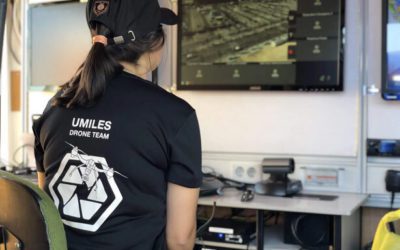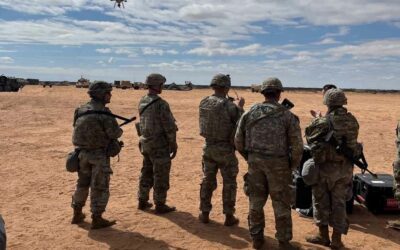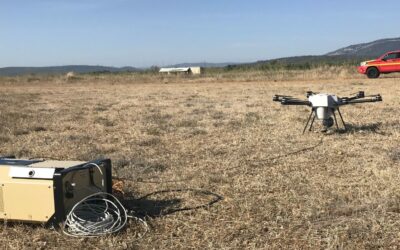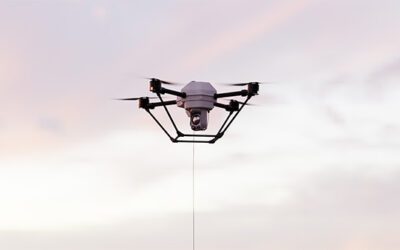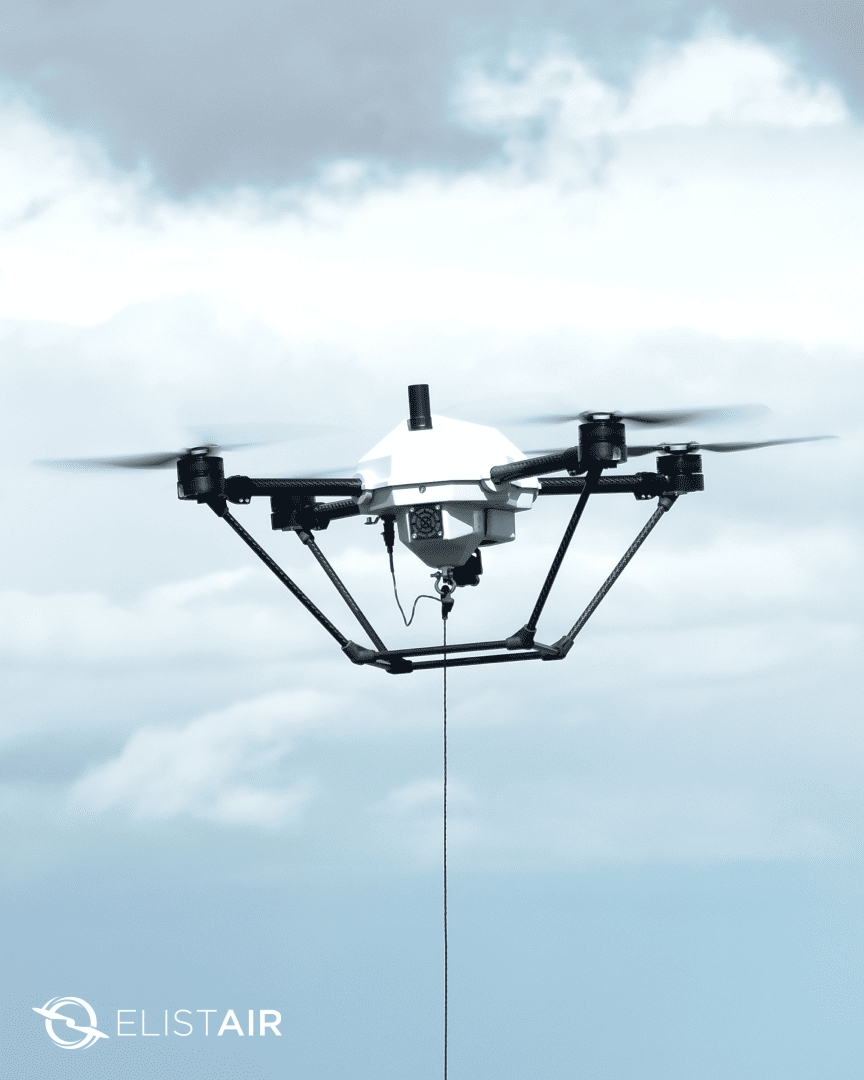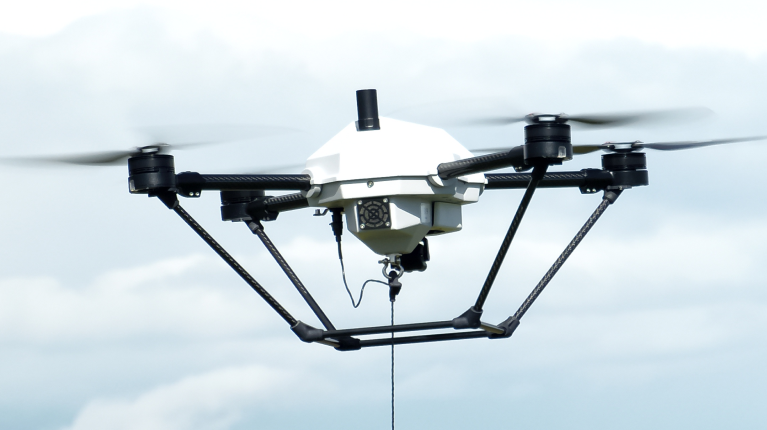Variable Height Antenna: Enhancing Tactical Comms with Drone-Integrated Solutions
Elistair Team
8 minutes
In today’s rapidly changing defense environment, communications is crucial for tactical operations. This applies to both special forces missions and border patrol. Clear and effective communication can determine success or failure.
Introducing the Variable Height Antenna (VHA). This new technology is changing drone-based tactical communications. It extends operational range, improves situational awareness, and offers a more reliable network connection.
But how exactly does a drone serving as a Variable Height Antenna transform tactical communication operations? Let’s take a closer look.
What is a Variable Height Antenna (VHA)?
A Variable Height Antenna (VHA) is an adjustable antenna for communication. In other words, it is a tactical drone, generally a tethered drone, equipped with a communication payload. Tethered drones, acting as VHAs, provide a significant advantage. They help maintain clear and strong communication channels by serving as mobile, elevated antennas
Unlike fixed-height antennas, a Variable Height Antenna (VHA) can be adjusted to different altitudes to overcome the typical limits of dense urban areas, vast rural landscapes, or challenging environments like forests or mountains. As a result, it extends the communication network coverage in the area around it and ensures better radio communication performance.
This technology improves tactical communications, allowing real-time data exchange with command centers and ground forces, ultimately enhancing mission efficiency and success.
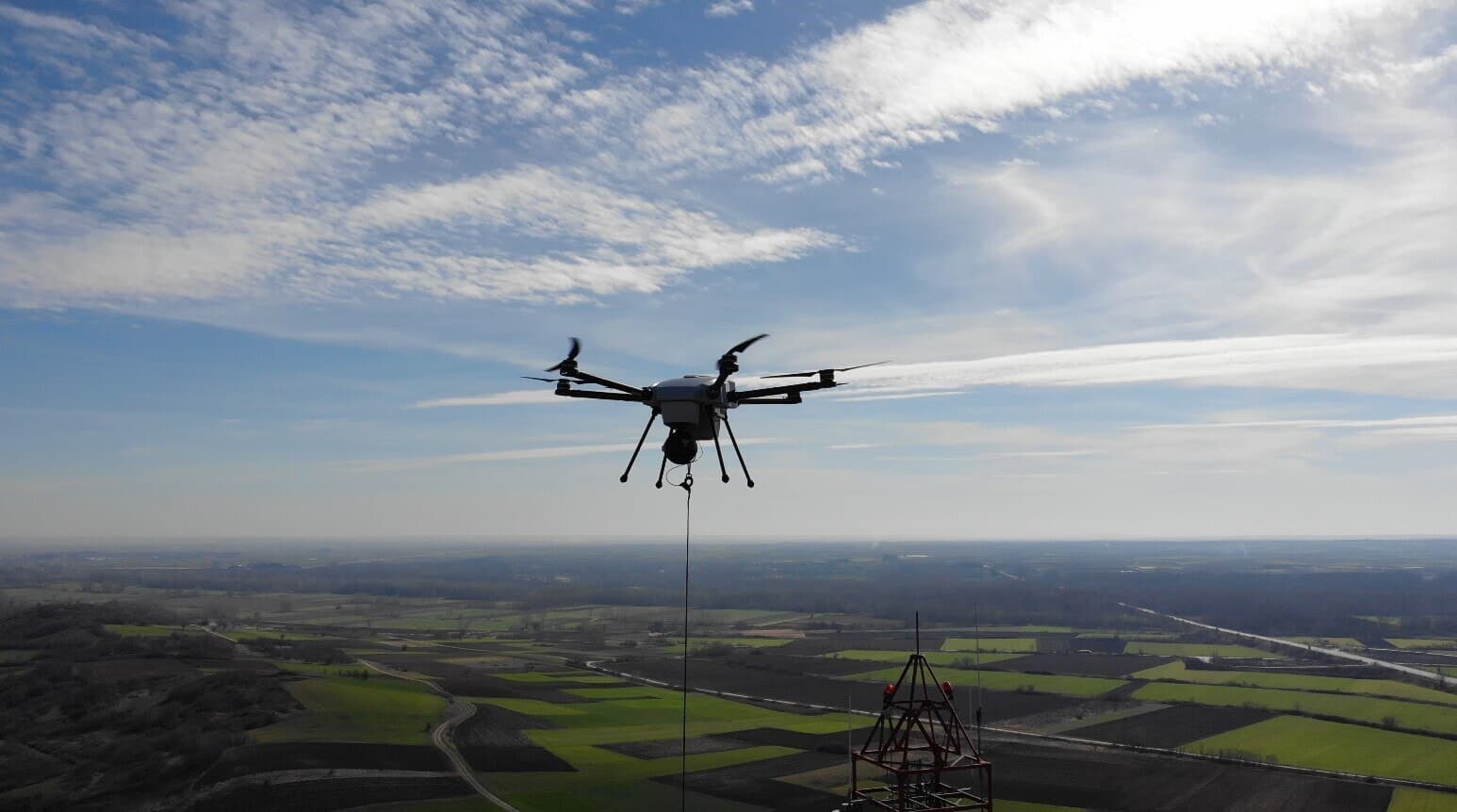
VHA: Redefining Tactical Drone Communications for Modern Missions
Optimized for Diverse Terrains
In modern defense operations, tethered drones equipped as Variable Height Antennas (VHA) play a critical role in ensuring robust and reliable communication networks, particularly in scenarios where traditional infrastructure is compromised or unavailable.
By elevating communication payloads to significant heights, these drones optimize line-of-sight communications, creating a dynamic “network bubble” capable of extending connectivity over vast operational areas.
A VHA drone can fly higher to keep a strong signal over different terrain. This ensures continuous contact with units on the ground. This flexibility extends the drone communication range, helping teams maintain a secure, interference-free link.
Urban environments, known for signal interference because of buildings and electronic clutter, benefit even more from VHA-equipped drones. By adjusting the antenna height, these drones can communicate above tall buildings, maintaining a stronger, clearer connection network. In tactical scenarios like military comms or police surveillance, this could be the difference between real-time situational awareness and delayed responses.
Real-Time Situational Awareness
A critical advantage of VHAs is their ability to enhance situational awareness.
A tethered VHA drone acts as a versatile communications node, augmenting radio connectivity across diverse platforms. This capability is invaluable in enabling seamless communication between vessels, ground facilities, and mobile units, even in environments with significant terrain obstacles.
They can send real-time video feeds, sensor data, and other important information to decision-makers on the ground.
Furthermore, these drones facilitate the integration of third-party radios, allowing interoperability across various communication systems and enhancing coordination between allied forces.
Resilience to Interference
One of the biggest challenges in drone operations is signal interference. This can come from other communications systems or from things like heavy rain and thick trees.
The Variable Height Antenna mitigates this risk. By adjusting altitude to escape interference zones, the drone can maintain a clear, reliable communications. This is especially important for border patrol missions or military communications, where the quality of communication links can impact mission success.
Key Benefits of VHA in Drone Applications
Increased Operational Range
One of the primary advantages of a Variable Height Antenna is the increase in operational range. By optimizing the antenna height, drones can communicate over vast distances, far beyond what standard fixed-height antennas offer. This wider range is very important in defense operations. Teams need drones to cover large areas for reconnaissance or surveillance without losing connectivity.
Equipped with electronic warfare payloads, tethered drones also serve as key assets in tactical scenarios where signal interception, jamming, or protection of critical frequencies is required. Their elevated position improves signal transmission and reception, making them indispensable in maintaining secure and resilient communication channels under hostile conditions.
This ability to work in both rural and urban areas makes VHA drones a powerful tool for security. They are useful for monitoring borders, large crowds, or dangerous environments.
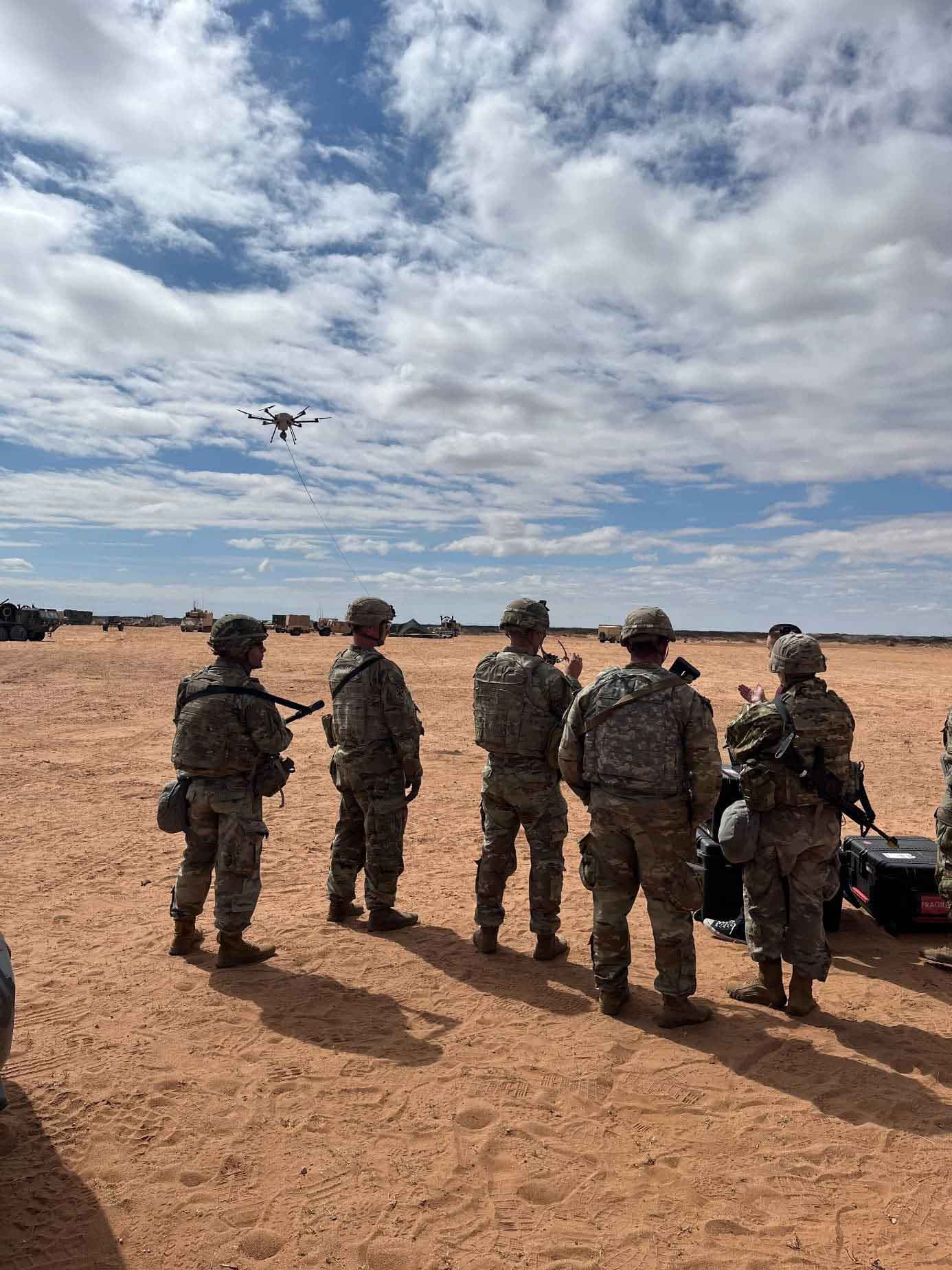
Low-Latency Communication
In fast-paced operations, delayed communication can be disastrous. A Variable Height Antenna significantly reduces latency and ensures that critical information, such as real-time video or sensor data, transmits instantly.
For military comms, this means a commanding officer can get real-time footage from a drone surveilling enemy positions. This helps speed up decision-making. Similarly, in police operations, VHA drones can provide instant intelligence, helping officers respond faster and more effectively.
This low-latency advantage extends to radio communication in mesh networks, where multiple drones and ground units connect. By adjusting the antenna height, VHAs help each part of the mesh system communicates without lag, making the entire network more efficient and reliable.
Improved Adaptability in Harsh Environments
Not all tactical missions occur in ideal conditions. Military or border patrols often deploys drones in harsh environments, whether in a desert, mountainous region, or dense forest. VHA drones respond to these challenging conditions by adjusting the height of their antennas to maintain strong communication despite environmental obstacles.
For border security or defense forces operating in these areas, adapting and maintaining situational awareness is crucial. This is key for mission success and the safety of personnel on the ground.
This adaptability also proves useful in law enforcement. Police drones can operate in urban areas where signals are weak. They can also be used during natural disasters when regular communications fails. VHA drones provide a reliable eye in the sky during important operations.
In today’s complex and dynamic tactical environments, having a reliable and adaptable communication network is key to operational success. The Variable Height Antenna (VHA) provides a new way for drones to keep strong communication. It works well over long distances and in tough areas. VHAs give better situational awareness and a longer operational range.
As tactical operations continue to evolve, adopting VHA drones becomes not just an advantage but a necessity. Whether you’re involved in defense, law enforcement, or border patrol, integrating VHA technology will extend your communication network and improve mission outcomes.
Variable Height Antenna: How VHA Boosts Drone Tactical Comms
What is a Variable Height Antenna (VHA)?
A Variable Height Antenna (VHA) is an adjustable antenna for communication. It gives tactical drones, especially tethered drones, an advantage. This advantage helps them keep clear and strong communication channels.
Unlike fixed-height antennas, a VHA can be changed to different altitudes. This helps extend network for the area around it. The VHA ensures strong radio communication for drones. This applies when they fly over dense urban areas, vast rural landscapes, or challenging environments like forests or mountains.
Tactical VHA drones can adapt their altitude to get the best signal. This helps them extend their communication network beyond typical limits. The height variability allows the drone to avoid obstacles that can block the signal, like buildings in cities or tall trees in forests. More importantly, this technology improves tactical communications, allowing real-time data exchange with command centers and ground forces, ultimately enhancing mission efficiency and success.

How VHA Improves Tactical Drone Communications
Optimized for Diverse Terrains
A Variable Height Antenna isn’t just about being adaptable—it’s about optimizing drone communication in unpredictable and diverse environments. Think of border security teams patrollinga rugged landscape with mountains and valleys. A VHA drone can fly higher to keep a strong signal over different terrain. This ensures continuous contact with units on the ground. This flexibility extends the drone communication range, helping teams maintain a secure, interference-free link. Urban environments, known for signal interference because of buildings and electronic clutter,benefit even more from VHA-equipped drones. By adjusting the antenna height, these drones can communicate above tall buildings, maintaining a stronger, clearer connection network. In tactical scenarios like military comms or police surveillance, this could be the difference between real-time situational awareness and delayed responses.
Real-Time Situational Awareness
Another critical advantage of VHAs is their ability to enhance situational awareness. Drones ensure constant communication over long distances. They can send real-time video feeds, sensor data, and other important information to decision-makers on the ground. For example, during law enforcement operations, having eyes in the sky is critical. A VHA drone can provide continuous and clear visuals, allowing officers to monitor a suspect’s movements or observe a perimeter without gaps in tactical communications. In defense missions, especially for border control or reconnaissance, VHA drones can spot unauthorized activities over large areas. They provide clear images or signals while maintaining a strong connection. This capacity to extend the communication network while maintaining high signal strength offers an undeniable advantage in securing and monitoring expansive territories.
Resilience to Interference
One of the biggest challenges in drone operations is signal interference. This can come from other communications systems or from things like heavy rain and thick trees. The Variable Height Antenna helps drones mitigate this risk. By adjusting altitude to escape interference zones, the drone can maintain a clear, reliable communications. This is especially important for border patrol missions or military communications, where the quality of communication links can impact mission success.
Key Benefits of VHA in Drone Applications
Increased Operational Range
One of the primary advantages of a Variable Height Antenna is the increase in operational range. By optimizing the antenna height, drones can communicate over vast distances, far beyond what standard fixed-height antennas offer. This wider range is very important in defense operations. Teams need drones to cover large areas for reconnaissance or surveillance without losing connectivity. Tethered drones, often used in police operations or by military units, particularly gain from their long range. The tether provides power and a data connection. However the height of the VHA allows the drone to communicate over longer distances. It adapts to the environment for better efficiency. This ability to work in both rural and urban areas makes VHA drones a powerful tool for security. They are useful for monitoring borders, large crowds, or dangerous environments.

Low-Latency Communication
In fast-paced operations, delayed communication can be disastrous. A Variable Height Antenna significantly reduces latency and ensures that critical information, such as real-time video or sensor data, transmits instantly. For military comms, this means a commanding officer can get real-time footage from a drone surveilling enemy positions. This helps speed up decision-making. Similarly, in police operations, VHA drones can provide instant intelligence, helping officers respond faster and more effectively. This low-latency advantage extends to radio communication in mesh networks, where multiple drones and ground units connect. By adjusting the antenna height, VHAs help each part of the mesh system communicates without lag, making the entire network more efficient and reliable.
Improved Adaptability in Harsh Environments
Not all tactical missions occur in ideal conditions. Military or border patrols often deploys drones in harsh environments, whether in a desert, mountainous region, or dense forest. VHA drones respond to these challenging conditions by adjusting the height of their antennas to maintain strong communication despite environmental obstacles. For border security or defense forces operating in these areas, adapting and maintaining situational awareness is crucial. This is key for mission success and the safety of personnel on the ground. This adaptability also proves useful in law enforcement. Police drones can operate in urban areas where signals are weak. They can also be used during natural disasters when regular communications fails. VHA drones provide a reliable eye in the sky during important operations.


